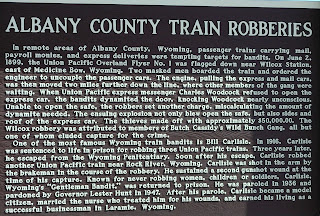The West Side is a neighborhood bridges-the Curtis Street Bridge, Clark Street Bridge, the Pedestrian Bridge, the Garfield Street Bridge, even the Greenbelt bridges. The neighborhood is bounded on the east by the railroad tracks, on the west by the river and the interstate, on the south by Spring Creek, and on the north by Curtis Street. As much as these are geographical markers, they are cultural. Today, many Laramie residents choose to live in the "other tree area". They enjoy trains in their backyards, neighbors on very small lots, and a mixed use residential/industrial neighborhood. The West Side is close to downtown yet on the way to small area communities.
Lincoln Community Center
For almost 100 years, there was a school in the West Side neighborhood. The Lincoln School (on the National Register of Historic Places) served a small, blue-collar neighborhood, separated from the rest of Laramie by railroad tracks. The school closed in 1978 and now the building is a community center.
Swedish Lutheran Church
Built in 1885, the church is one of the oldest surviving churches in Wyoming. Originally, services in Swedish. In 1885 there were about 250 Scandinavians in Laramie and the church served the entire Scandinavian community, including Norwegians and Danes.
Clyde Garcia House
This house predates the founding of Laramie and appears to stand in the middle of the street.
Queen Anne Cottage
This house, built in 1883, is made of brick covered by stucco. The brick came from a local brickyard and was produced by the Wyoming Territorial Prison inmates.
Bud's Bar
The first business at this site was a malt shop. After Prohibition, the second liquor license in the state was issued in this establishment. When a viaduct (now gone) was built the traffic passed right by here and the place was known as the Viaduct Tavern.
Clark Street Viaduct Murals
The murals on the concrete supports were designed by a member of a Laramie railroad family and painted by local teens.




















































